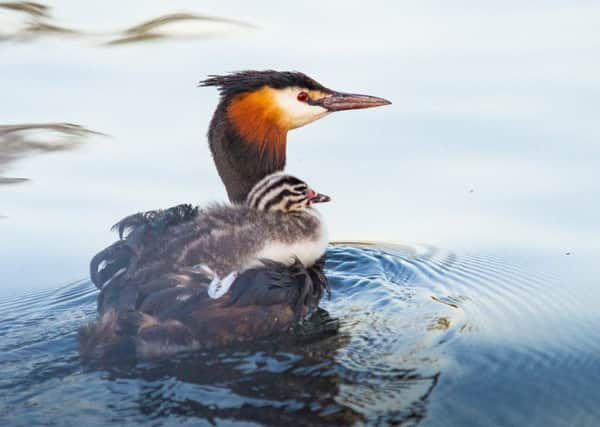Country & Coast: Nature's fledgling alternative to Glastonbury


Last weekend it was Yorkshire’s turn to have a birdwatching festival, the first-ever Leeds Birdfair, and although considerably smaller in scale it drew enough of a crowd to suggest it will be an annual event.
The venue was Rodley Nature Reserve on the banks of the River Aire a few miles from the city centre. Created from an old Yorkshire Water sewage works, it is considered the best community-run wetland reserve in the north and is all the more remarkable for being entirely surrounded by suburbs.
Advertisement
Hide AdAdvertisement
Hide AdWithin a few minutes of my arrival I was treated to the sight of a great crested grebe cruising on the lagoon with three fluffy chicks on its back, then a flash of turquoise on the river as a kingfisher shot upstream.
I’m told I missed the concert given by a grasshopper warbler in which it released the famous high-pitched trill that is often compared to a fishing line running off an angler’s reel, and also the chewee-chewee-cheweeing of a Cetti’s warbler, a bird which was hardly known in Yorkshire 40 years ago but has become a regular occurrence at wetland habitats.
The reserve has some resident barn owls and one event on the Birdfair programme was the dissection of its pellets, the indigestible fur and bones of the owl’s prey which are regurgitated in lumps after each night’s hunting.
Pulling these pellets apart in water to try and identify the bird’s diet was something I last did in my early teens, and earned a scolding for doing so in my mother’s best trifle dish, so it was great to see the barn owl’s last meal of common shrew being analysed.
Advertisement
Hide AdAdvertisement
Hide AdBack on the wetland areas, a gadwall mother was parading her seven ducklings, while a pair of common terns worked hard to satisfy the appetites of two almost fully-grown chicks on a raft moored in the lagoon.
One of Rodley’s stalwart volunteers, Peter Murphy, showed visitors the reserve’s £800,000 fish pass which allows brown trout, sea trout, sea lamprey, eels and salmon to get round a high weir and reach their spawning grounds. This has provided an unexpected bonus for Rodley by creating a new habitat, a 260ft-long fast-flowing mountain stream, which attracts dippers and grey wagtails.
Congratulations to the day’s organiser, Leeds birdwatching coach Linda Jenkinson.